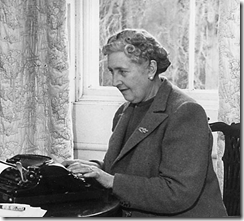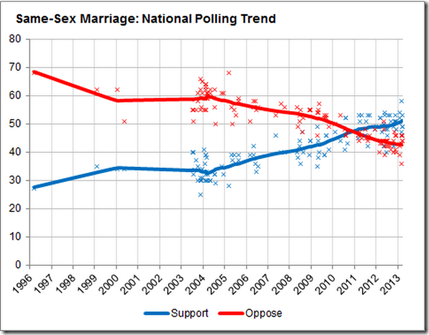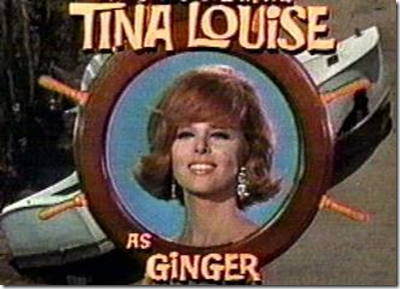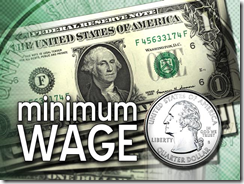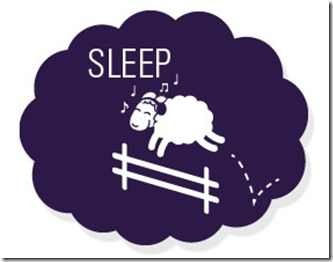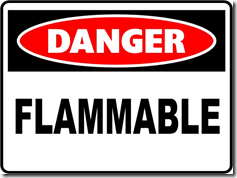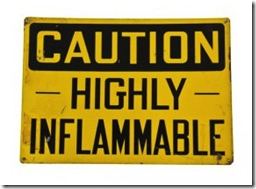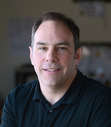Matthew Dicks's Blog, page 414
March 1, 2014
I may not be an author yet, but I write like one.
I’ve published three novels since 2009. All three were sold internationally, including the most recent, Memoirs of an Imaginary Friend, which has been translated into 25 languages worldwide and is an international bestseller.
All three of my novels have been optioned for television or film.
My next novel, The Perfect Comeback of Caroline Jacobs, is in the final stages of revision with my editor.
I’ve even co-written a rock opera that was produced at a local theater last year.
Despite this success, I still don’t think of myself as an accomplished author. I feel like I have much to prove. I consider myself a rookie. A newbie. Possibly a pretender.
Maybe this is something all writers go through. I often wonder how many books I will need to publish before I don’t feel odd referring to myself as an author.
Oddly enough, it’s often not the success of any of my books that makes me feel most akin to other authors, but instead the discovery that we have something in common in terms of the craft.
I read some facts about other authors much better than me recently that gave me hope that I might also be a real author, or at least I might begin thinking about myself as a real author.
Agatha Christie never owned a desk. She wrote 80 novels and 19 plays wherever she could sit down.
I own a desk in an unheated, insulated “office” off my living room. In the winter, the room is literally freezing. I don’t think I have ever written a single word of fiction while sitting at that desk.
I do much of my writing on my dining room table, but I also write in libraries, bookstores, my children’s bedrooms, fast food restaurants, hotels, coffee shops, public transportation, the teacher’s lunchroom and any other place that I can find.
I’m always amused by the writer who tells me that he or she can only write in a well appointed coffee shop while drinking a hazelnut latte. I’ve met many, many writers who claim that they can only under of specific conditions at specific times, but I have yet to meet a published author with such rigid requirements.
Stephen King writes every day of the year and aims for a goal of 2000 words each day.
I don’t have a daily word goal, mostly because I am often dividing my writing between two or three books plus this blog and another (and various other projects), so counting words would be hard.
But I have written every single day of my life for at least ten years, including my wedding day, every day of my honeymoon, and on the days that both of my children were born.
When Anthony Trollope finished writing one book, he immediately started another. Henry James did the same thing.
When I finished my first novel, Something Missing, I resolved to take a three month break from writing and begin the process of finding an agent. I typed the final word of the book on a Saturday afternoon, closed the document, sat for about 30 seconds, pondering my next move, and then opened a new Word document and began my next book.
I have done the same for every book since.
February 28, 2014
Big news does not mean big numbers when it comes to same sex marriage.
Arizona, Idaho and Kansas are the three most recent states to attempt to legalize discrimination based upon sexual orientation.
Arizona’s law passed through the House and Senate before the governor vetoed the bill.
The Kansas bill passed the House on a clear majority before dying in the House.
The decision on the Idaho bill, which is the most egregious of them all, is pending.
It’s easy to see these state legislators take positions against same-sex marriage and civil rights and think the sky is falling, but before you start sounding like Chicken Little, remember this:
The combined population of these three states barely exceeds the population of New York City.
Legalized discrimination is big news, as it should be, but these three states combine for a little more than 3 percent of the total US population.
The most recent polling indicates that 53% of Americans now support same sex marriage and 17 states now recognize same sex marriage with three more pending appeals.
It’s true. The sky is falling. It’s just falling on the bigots.
Ginger was a ginger
A ginger, in case you didn’t know, is a word used (oftentimes in a derogatory manner) to describe a red-headed person.
Ginger from Gilligan’s Island was a red head, thus making Ginger a ginger.
Does anyone else find this odd and possibly disconcerting?
February 27, 2014
Teaching is not quite a minimum wage job, despite what my students may think.
My students were reading an article about the proposed increase in the minimum wage in their Time for Kids magazine.
I was secretly listening to their conversation.
Student #1: “If they increase the minimum wage, at least Mr. Dicks will get a raise.”
Student #2: Mr. Dicks doesn’t make minimum wage.
Student #1: I thought teaching was a minimum wage job.
Student #2: I don’t think so. Maybe? I don’t know.
The Reverse Nap: Mounting evidence that I am not a crazy person
I’ve been reversing napping for more than a year now.
I go to sleep at my regularly appointed hour, usually somewhere between 11:30 PM and midnight.
Then I wake up at some point in the middle of the night, usually around 2:00 AM. I climb out of bed. go downstairs and work for about 90 minutes. I write, revise, empty the dishwasher, walk the dog, pay bills, read.
Then around 3:30 AM I return to bed and experience all the joys of climbing into a warm bed and falling asleep for a second time that night. I sleep for another 90 minutes or so and then wake up again and begin my day.
The Reverse Nap.
I don’t do it every night, but I do it many nights.
When I first started reverse napping, people thought I was crazy. Then I wrote about it, and shortly thereafter, a few people began trying it and wrote to me, singing its praises.
Then I found research suggesting that segmented sleep, with two periods of rest separated by a period of wakefulness, was the dominant form of sleep in Western civilization prior to the Industrial Revolution. Human beings, it turns out, are already wired to reserve nap and did so for centuries.
Then I found research suggesting that if you are already awakening in the middle of the night and struggling to fall back asleep, remaining in bed can actually lead to “learned” insomnia, a kind of sleeplessness is caused by anxiety that comes from trying too hard to doze off when you can’t.
O’Connor turned to Dr. Meir H. Kryger, a professor at Yale School of Medicine and the author of “The iGuide to Sleep,” who suggests the following:
If you wake up at night and find that you still cannot get back to sleep after 20 minutes, do not lie there in anguish staring at your clock. Get out of bed and do something that distracts and relaxes you, like reading a book. Then return to bed when you feel sleepy.
Dr. Kryger is suggesting the Reverse Nap.
Perhaps I’m not so crazy after all.
February 26, 2014
Ignorance is bliss
Three words that my daughter continues to use incorrectly:
“Last day” in place of any day before today
“Oh” in place of “Or”
“That wise” in place of “That’s why”
She also thinks that the person who is “It” in a game of tag is the person being chased rather than the chaser.
I’ve never loved ignorance so much.
February 25, 2014
The Moth: Shoe Thief
The following is a story that I told at a Moth StorySLAM at The Bell House in Brooklyn in March of 2012.
The theme of the night was Theft. I told a story about the theft of shoes from a local show store.
I finished in first place.
What kind of food is this?
I was visiting the pretend diner at Kid City, a local children’s museum. I was sitting at a Formica table, waiting for my daughter to serve me some plastic food on a plastic plate.
These are the two items she placed in front of me.
I honestly have no idea what either of these things are supposed to be. Nor did my wife.
Thoughts?
Joining the war against nonplussed is flammable/inflammable
Since launching my war against the word “nonplussed” last week, the campaign has been proceeding surprisingly well. In addition to my own use of the word “nonplussed” at least half a dozen times last week, I’ve received reports from several recruits who have also been aggressively using this ridiculous word in an effort to confuse people and ultimately turn them against it as well. At least two recruits have even utilized “plussed” in a sentence, which is a word that doesn’t actually exist except NOW IT DOES!
And good news! I’m pleased to report that recent negotiations have led to an agreement with forces hoping to align themselves with the anti-nonplussed movement. In return for their support, I have pledged to launch a new offensive against the words “flammable” and “inflammable.”
“Flammable” and “inflammable,” in case you didn’t know, mean exactly the same thing. Conveniently, I despise the stupidity of these two words as well.
My plan of attack is simple:
Utilize the words “flammable” and “inflammable” in the same conversation interchangeably. If possible, use the two words in the same sentence. Act as nonchalantly as possible while doing so.
For example:
The problem with wearing a long beard is that human hair is highly flammable, so until we find a way to make whiskers less inflammable, men with beards should avoid roasting highly inflammable marshmallows over a campfire.
The goal of this offensive is to draw awareness to the stupidity of these two words and their single definition in hopes that one of them (“inflammable” would be my choice) is eliminated from the English lexicon altogether.
Finding legitimate uses for these two words in everyday life is admittedly challenging, but when found, I think the execution of this plan will be great fun.
Who is with me?
February 24, 2014
I’m launching an email newsletter. What should be included?
The publishing Gods (Jane Friedman and many others) have declared that the most important tool that an author has for building a platform and marketing a book is a strong mailing list and a regular newsletter.
Having used a mailing list as the sole means of promoting Speak Up, our Hartford-based storytelling organization, I have come to understand the power of this seemingly old fashioned form of marketing. We have sold out every one of our shows simply through the power of an email.
I’ve been collecting email addresses for more than five years. There’s a place on my website and blog to enter your email for my mailing list, and this somewhat annoying field disappears once you have signed up. After five years, I have a surprisingly large mailing list.
The question is what to include in a newsletter.
Here are my ideas so far:
Links to the top 3 blog posts from the previous week, with commentary about reactions to the post when appropriate
Updates on upcoming storytelling and speaking appearances
Links to any recent videos of me performing for The Moth, TED and similar organizations
An update on the progress of my books and any behind-the-scenes peeks into the publishing world that I could provide.
Do you have any thoughts on what you’d like to see included in a newsletter from someone like me? I’d love to hear your thoughts. Since I write a blog and post regularly, I’m looking for content that does not appear already on the blog. Something different and special that will make people open the newsletter when it arrives in their inbox.
The experts say I should be sending a newsletter to my readers at least once a month, and preferably one a week. I ‘m considering splitting the difference and sending one every other week.
I’d love to hear your thoughts on this as well.

